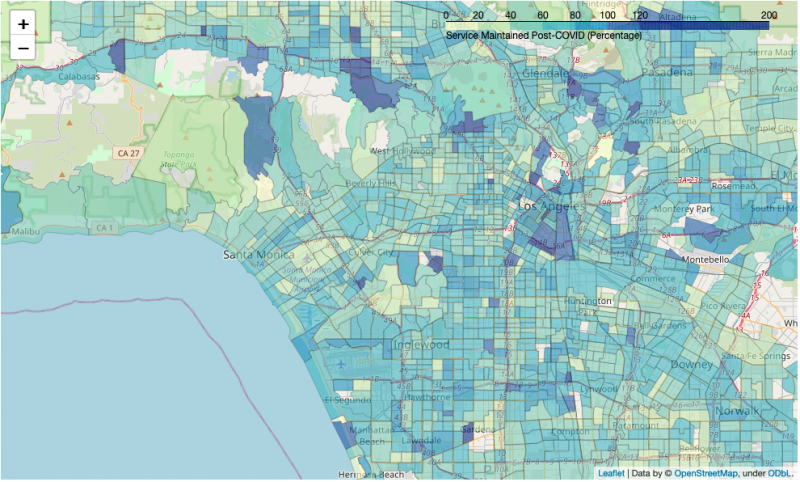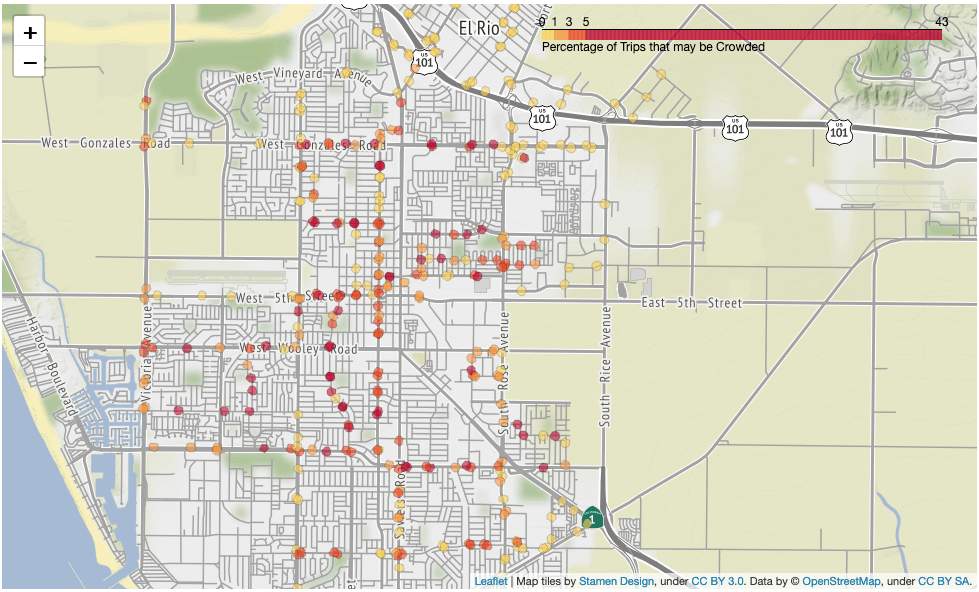Monitoring and Adjusting Transit Service during a Pandemic
About the Initiative
The global COVID-19 pandemic has shocked many economic and social systems. One of the most profoundly affected have been the public transit systems that serve cities large and small. Ridership initially plummeted, service has been cut, and in some cases slashed, and public health concerns are many, and finances increasingly tight on public transit systems around the globe, in the U.S., and here in California.
To understand how public transit is evolving in the pandemic, UCLA Institute of Transportation Studies researchers have looked into what transit service is changing, how it is changing, why it is changing, and for whom it is changing. The project has also examined how well the changes made affect the spread of COVID-19, and how transit can continue to safely serve the mobility needs of essential workers during the pandemic.
This Rapid Response research is generously funded by the University of California Statewide Transportation Research Program.
Research Questions
The specific questions that our research team investigated are listed below. Click on each question to see background information and our in-progress work on the subject.
Publications
All publications will be hosted on the University of California Institute of Transportation Studies COVID-19 website.
About the Research Team
Tianxing Dai, Undergraduate student researcher
Eric Dasmalchi, Graduate student researcher
Maya Desai, Undergraduate student researcher
Hao Ding, Doctoral student researcher
John Gahbauer, Project manager
Yu Hong Hwang, Graduate student researcher
Julene Paul, Doctoral student researcher
Sam Speroni, Doctoral student researcher
Brian D. Taylor, PhD, FAICP, Principal Investigator



